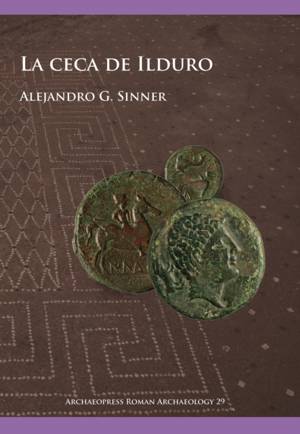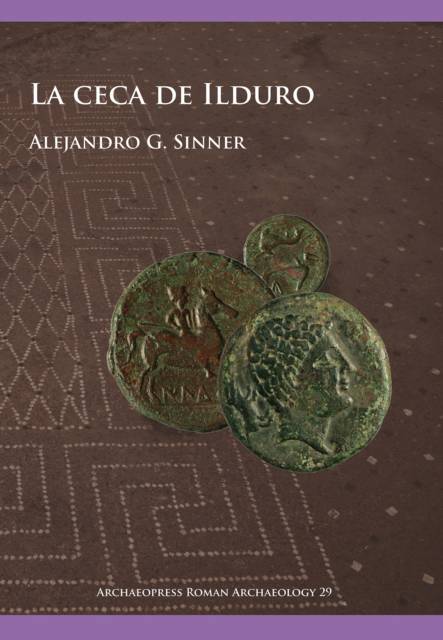
Bedankt voor het vertrouwen het afgelopen jaar! Om jou te bedanken bieden we GRATIS verzending (in België) aan op alles gedurende de hele maand januari.
- Afhalen na 1 uur in een winkel met voorraad
- In januari gratis thuislevering in België
- Ruim aanbod met 7 miljoen producten
Bedankt voor het vertrouwen het afgelopen jaar! Om jou te bedanken bieden we GRATIS verzending (in België) aan op alles gedurende de hele maand januari.
- Afhalen na 1 uur in een winkel met voorraad
- In januari gratis thuislevering in België
- Ruim aanbod met 7 miljoen producten
Zoeken
€ 101,95
+ 203 punten
Omschrijving
The minting of coinage in a territory without previous monetary history or tradition reflects a series of political, social and cultural changes that took place in order to make it possible. Such changes can be traced in the archaeological record thanks to elements apparently as different as coins, ceramics, epigraphy, funerary rites or architecture; these changes thus emerge as some of the most significant points in the colonization process that took place throughout the second century B.C. and at the beginning of the next century in the valley of Cabrera de Mar (ancient Ilduro) and the Laietani territory. This book is exclusively devoted to the mint of Ilduro, its main goal being to study not only the issues produced by the workshop in detail, but also the role that this coinage had in the monetarization of a changing society, that of the Laietani, which had never previously needed to use coinage. To do so, the author of this study endeavours to answer the following questions in as much depth as possible: Who minted the coins? Why? What for? How? Where? When? How many? With the aim of answering the aforementioned questions, this volume has been organized into ten chapters divided in three broader sections dedicated to studying, specifically, each one of the aspects involved in the production of this mint. The chapters considering the location of the workshop and the legends used are fundamental to answer the questions of who minted the coins and where. On the other hand, aspects such as metrology, typology and the technique (metallographic analysis) used by the mint are essential to understand how the coins were minted, and also to put forward a hypothesis as regards the use given to the coin issues discussed in the present study. Finally, the chapters dedicated to the production, classification and chronology of the issues should answer such important questions as when and how much money was put into circulation. This is a book that, in addition to increasing our knowledge of Iberian numismatics, brings us closer to the evolution and production of the coin issues minted in present-day northeastern Spain in general and to the Ilduro workshop in particular. Spanish description: La acunacion de moneda en un territorio sin historia ni tradicion monetaria previa supone que se ha producido una serie de cambios politicos, sociales y culturales para hacerla posible. Tales cambios pueden detectarse en el registro arqueologico gracias a elementos aparentemente tan distintos como dicha moneda, la ceramica, la epigrafia, los ritos funerarios o la arquitectura, y se perfilan como algunos de los puntos mas relevantes para entender el proceso de colonizacion que tuvo lugar a lo largo del siglo II a. C. e inicios de la centuria siguiente en el valle de Cabrera de Mar, asi como en el territorio layetano. Este libro, dedicado exclusivamente a estudiar la ceca de Ilduro, tiene como objetivo estudiar detalladamente no solo las emisiones de un taller monetario, sino tambien el papel que las mismas jugaron en la monetizacion de una sociedad cambiante, la layetana, que nunca antes habia tenido necesidad de utilizar la moneda. Para ello, el autor de esta monografia responde de la forma mas detallada posible las siguientes preguntas: Quien acuno la moneda? Por que? Para que? Como? Donde? Cuando? Cuanta? Con la intencion de responder a todas las preguntas anteriores, el presente libro se ha estructurado en diez capitulos que articulan tres bloques fundamentales dirigidos a tratar, de forma especifica, cada uno de los aspectos de la produccion del mencionado taller monetario. Los apartados dedicados a la ubicacion del taller y a las leyendas utilizadas resultan clave para responder a las cuestiones de quien acuno la moneda y donde. A su vez, aspectos como la metrologia, tipologia y tecnica (analisis metalograficos) utilizada por la ceca son fundamentales para conocer como se acuno la moneda e, incluso, plantear hipotesis sobre el uso que se dio al numerario puesto en circulacion que hoy estudiamos. Finalmente, los capitulos que versan sobre la produccion, ordenacion y cronologia de las emisiones deberian ofrecer respuestas a interrogantes tan trascendentes como cuando y cuanta de dicha moneda se puso en circulacion. Estamos ante una obra que, ademas de profundizar en la numismatica peninsular prelatina, nos aproxima a la evolucion y produccion de las emisiones ibericas del noreste peninsular en general y del taller de Ilduro en particular.
Specificaties
Betrokkenen
- Auteur(s):
- Uitgeverij:
Inhoud
- Aantal bladzijden:
- 189
- Taal:
- Spaans
- Reeks:
Eigenschappen
- Productcode (EAN):
- 9781784917234
- Verschijningsdatum:
- 31/12/2017
- Uitvoering:
- Paperback
- Formaat:
- Trade paperback (VS)
- Afmetingen:
- 203 mm x 290 mm
- Gewicht:
- 706 g

Alleen bij Standaard Boekhandel
+ 203 punten op je klantenkaart van Standaard Boekhandel
Beoordelingen
We publiceren alleen reviews die voldoen aan de voorwaarden voor reviews. Bekijk onze voorwaarden voor reviews.









